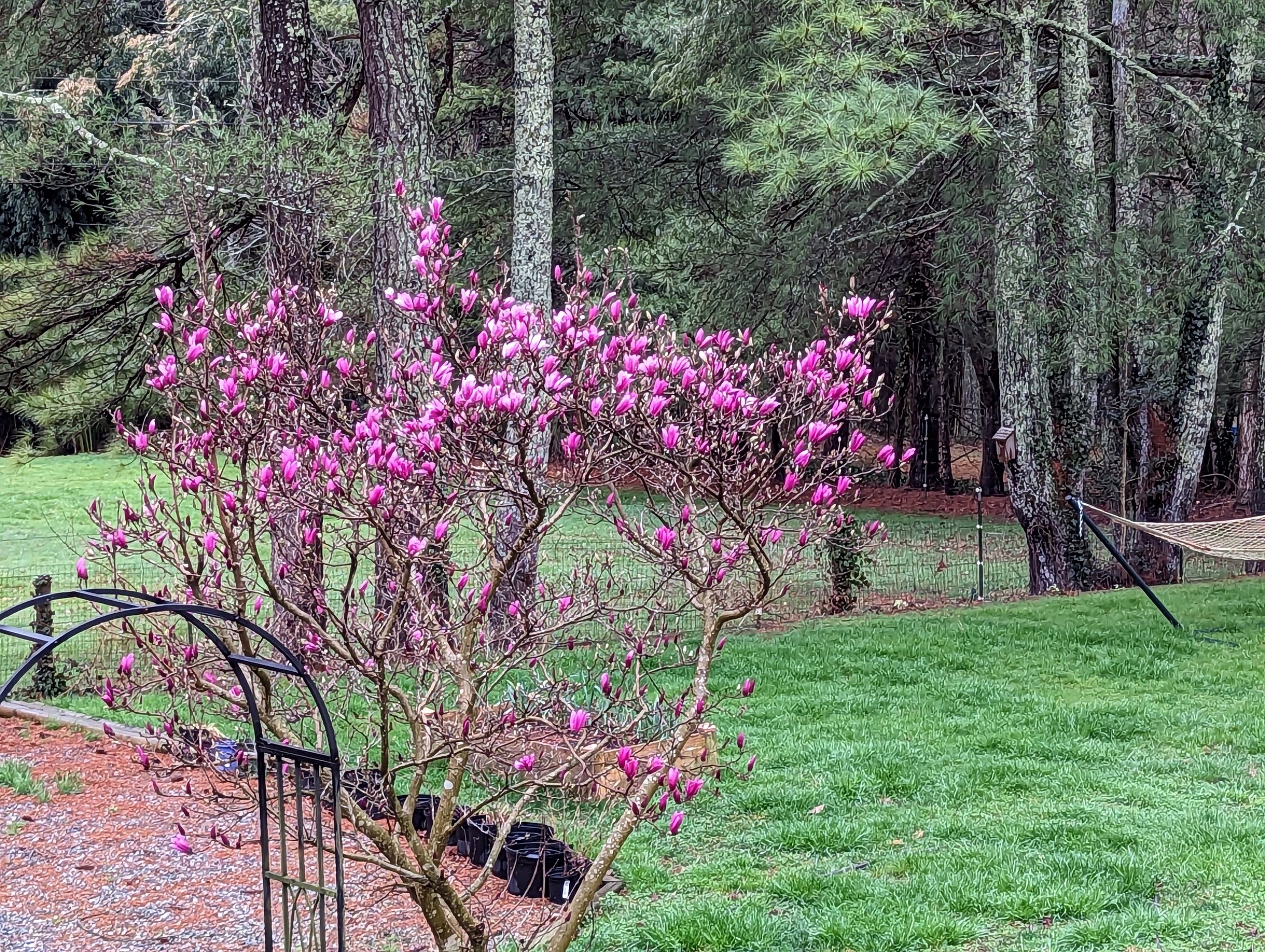We’ll consider this major spring garden update Part 1.
On one hand, the pace of my gardening season seems slower. Then I look at the flats germinating in my office, or already transplanted sitting in my driveway, sizing up and getting ready for planting into our raised beds. This is our 4th season gardening here. We are (mostly) beyond the bizarre of COVID. I worked hard on the Growing Epic Tomatoes course with Joe Lamp’l, which was a key “busy” feature of the last two seasons. Already, this year feels different.
On January 31, I made my first planting - some flowers, some greens and other cool weather crops. It is they that have been transplanted. For flowers, I planted yellow and pink canna sent to me by my friend John. Germination was slow and spotty and I may go back when it gets warmer and repeat. Older packets of Echinacea and Balcony Petunia and Blue Wood Aster didn’t germinate. Pansies and Snapdragons did, and they are progressing well.
I planted Golden Beet, Crosby Beet (both of which germinated well), and an older packet of Detroit Red Beet, which did not. I have lots of plants of rhubarb and Bright Lights chard, and a few plants of a mustard, collard and kale. I’ve got plenty for my needs.
Seaside, Space and Nobel spinach germinated great; Acadia did not. All the lettuce - Gabriella, Green Ice, Rouxai, Magenta and Cherokee - are doing wonderfully. All of this will represent our cool weather garden that will reside in containers and our raised beds.
transplanted spinach, lettuce, etc - living outdoors
On February 20, I planted a flat with a few different flowers, a basil and lots of saved Hibiscus - the main reason being I wanted to explore how hibiscus seed maintains viability with age. The flowers planted were Thunbergia, Salvia Coral Nymph, a few saved Baptisia, and Carmel Chianti basil (saved seed). I am waiting on the baptisia, but all else germinated quickly and well.
As for the hibiscus, most were swamp mallow of various colors,, two are coccinea, the other being Hibiscus manihot, tall with yellow flowers and very spiny seed pods. Of 2014 saved seeds, so far 5 of 7 types germinated. 2015, 3 of 7; 2016, 6 of 7; 2017, 5 of 8, and 2022, 3 of 4 - in total, 21 of the 33 types I planted germinated. I have at least one plant of each color - white with dark red eye, pink with dark red eye, pink with pale eye, one maroon, and both coccinea red and white (Texas Star). I have no idea where these will all go, but I do want to get one plant of each for fresh seed saving. In general, they seem to be perennial here as well.
The hibiscus flat - thunbergia is lower left
Also on February 20 I undertook a planting of older tomato seeds that are quite close to those I obtained. The intent of this planting was to check on germination of older saved seed. Germination continues, even today on day 16, so the results are incomplete. No shows to date are Anna Russian (2012 and 2013 seeds), Bisignano #2 (2011 and 2013 seed), Eva Purple Ball (2011), Hege German Pink (2012), Rasp Red (2008), Red Brandywine (2006), and Yellow Brandywine (2011 and 2013). I do have seedlings up and growing from Big Sandy, Brandywine, Lucky Cross, Cancelmo Family Heirloom, Cherokee Chocolate, Cherokee Purple, Coyote, Dester, Gallo Plum, Giant Syrian, Hugh’s, Indian Stripe, JD Special C Tex, and Monticello Mystery. The oldest germinating seeds are from 2009 and 2011 - 12 and 14 years old. At that age, germination is slower and erratic - 14 days or more.
In addition, in that flat I planted some peppers and eggplants - all 7 peppers (seed saved 2022) and all four eggplant (seed saved 2022). Fresh pepper or eggplant seeds, thus take 6 to 8 days to germinate, compared with fresh tomato seeds, that take between 3 and 5 days.
old tomato seed and fresh pepper and eggplant flat - getting some filtered sun
I will discuss last night’s marathon planting of 3 flats, 150 cells, of tomatoes - and also discuss possibilities of where they will be grown. With the nearby Veterans Healing Farm greenhouse, my options will be flexible and interesting.





























